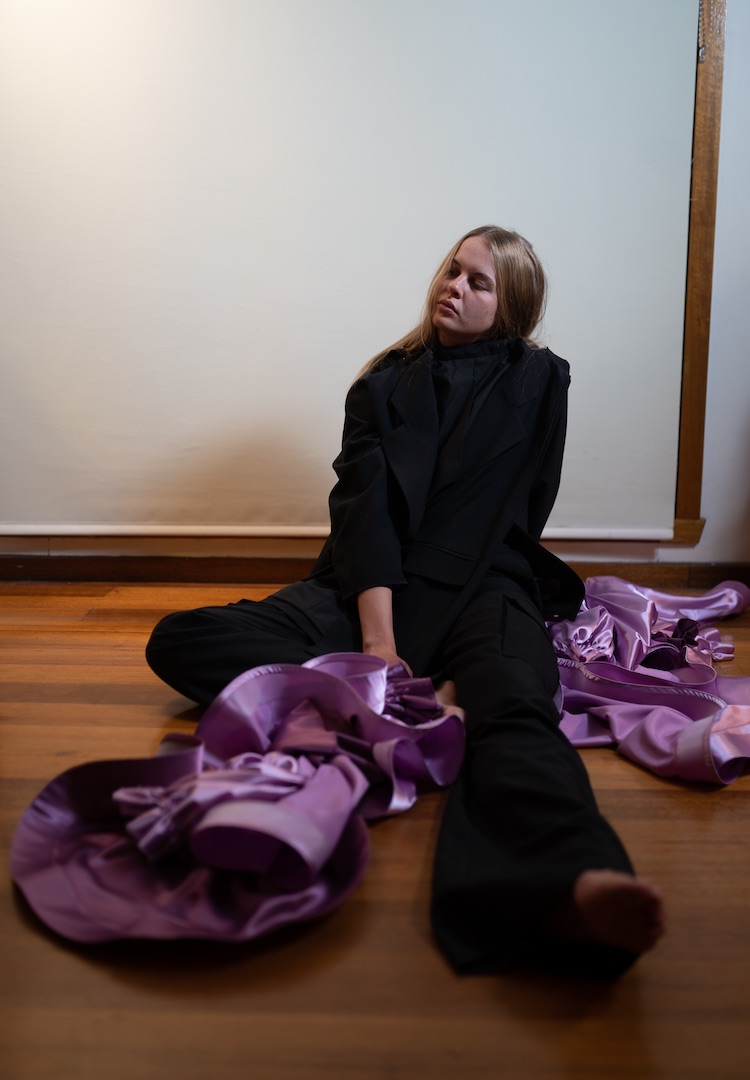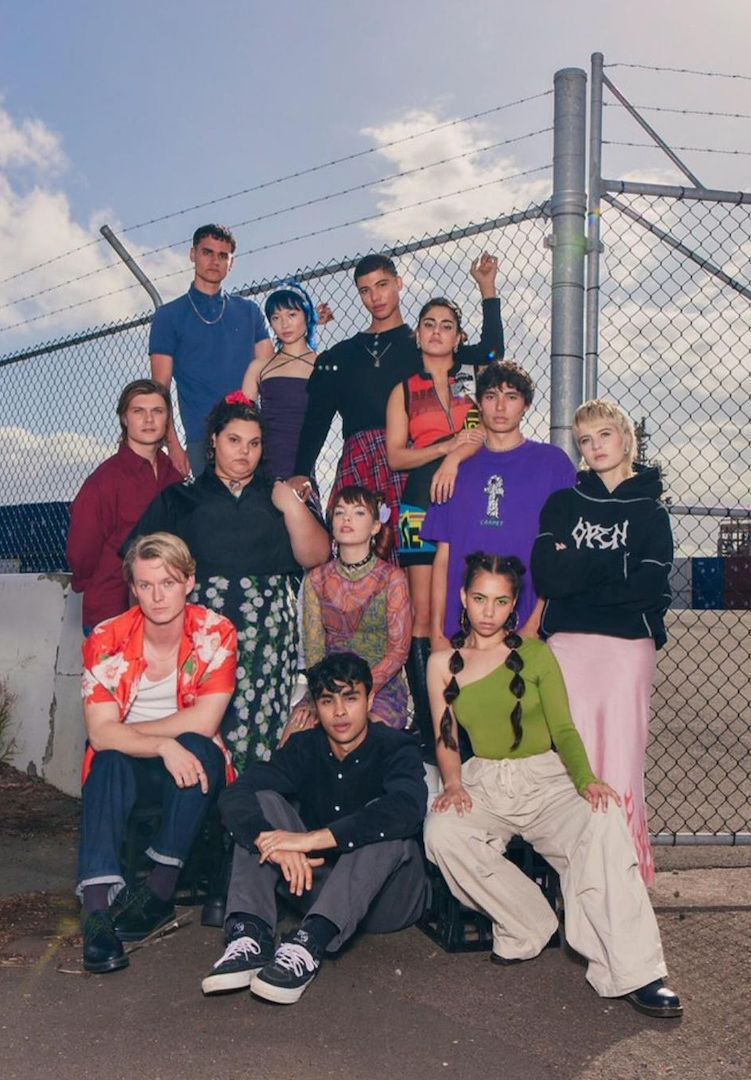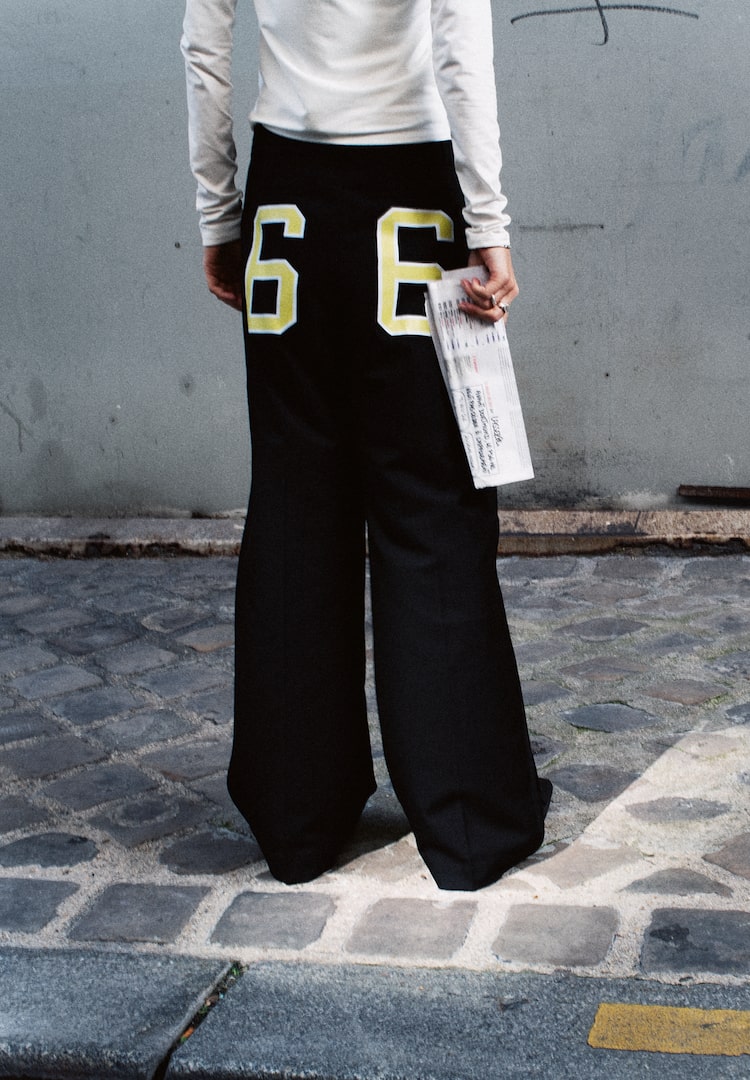The emerging designers to watch from Melbourne Fashion Week’s Student Runway, according to a stylist
IMAGE VIA Rubee Hay
WORDS BY MAGGIE ZHOU
Fashion’s future.
A crowd favourite during fashion week, student runways are a chance for Australia’s best and brightest students to showcase their work. With the fashion industry always rapidly changing, these runways are a way to gauge what the future of fashion could look like.
This year’s Melbourne Fashion Week’s Student Collections Runway sees 38 students from various fashion institutions showcasing three looks each. As an official media partner of Melbourne Fashion Week, we had the chance to sit down with stylist Stuart Walford to hear more about the five student finalists.
For more fashion news, shoots, articles and features, head to our Fashion section.
Stuart has been the stylist and mentor for this runway for the last six years, in his time overseeing a couple hundred budding student designers. Alongside styling this year’s runway, he’s also curating a free pop-up exhibition featuring previous student designers from the past few years.
“The biggest thing that I’ve noticed this year is that the students [are] more focused on making real clothes as opposed to this kind of trend that we see in student runways where it’s just really big, theatrical, sort of avant-garde… pieces,” Stuart tells me.
“Whereas this year, the students’ focus seems more on making clothes that are almost more wearable and I think that is very sustainable in itself. [These are] pieces that are made to last, pieces that can be worn [in] more of a regular way, they’re not necessarily plain or commercial but they’re just focusing on more simple archetypes of clothing.”
The five finalists are a diverse bunch of students, from their backgrounds to their sartorial styles and mediums of choice. Here, Stuart walks us through what we can expect from the finalists.
Phuc Ung, RMIT School of Fashion and Textiles

[Phuc’s showcase] is probably one of the collections I’m most excited to see presented in the Student Runway because it’s… using technology to help the garments perform, without giving too much away. There are sort of surprise elements within the outfits that will do certain things on timers.
I think it’s a performative collection. The garments are really beautiful on their own, so if you didn’t know that they were almost mechanically engineered, they hold up as really beautiful, really well-made clothes. But then that sort of extra element of surprise is kind of breathtaking. Because this one’s really complex in its performative element, I hope everyone will notice what we want them to see.
Alex Groves, RMIT School of Fashion and Textiles

Alex is more of a textile-focused student; the collection is really a knitwear moment. All of the three looks are completely knitted by Alex. Some of the inspiration comes from wanting certain pieces to mimic that sort of textural appearance of using thread and knitting as a technique to bring that to life.
So from afar, things kind of look a little bit animalistic. But when you get up close, you realise that it’s all just yarn and thread with different knitting techniques to give you that textural sensibility. The clothes are really beautiful, they’re really well made. They’re easy to style and work back with each other.
Alex is using sort of beading techniques, along with knitting, to add different textures. The highlight piece would be this shawl cardigan with a statement cuff. There’s also a knitted bike short, that’s sort of in a two-piece ensemble. That’s a really cool piece and one that I can see people kind of wearing now, it’s almost something kind of vintage.
Olivia Ferronato, Box Hill Institute

What’s really interesting about it is Olivia has found a collection of old high-vis vests and workwear pieces. She’s cut them all up into strips and used that fluorescent yellow and orange that we associate with workwear and worksites and applied them in… a really new way. I think it’s a really interesting take on sustainability.
Often we’ll see things kind of being deconstructed and pulled apart, but the way that she’s so carefully almost made a textile out of this high-vis and then used it in really highlight areas on these looks is really quite fascinating. When you look up close there’s a kind of sci-fi, elegant and stylistic sensibility to the three looks. On top of all of that, she’s worked with her partner to 3D print a range of accessories – there are 3D-printed earrings and 3D-printed handbags that function.
Jessica Virk, Whitehouse Institute of Design

Her collection [is titled] The Median. It’s really interesting because it’s really deconstructed. What she’s done is she’s found these blazers, blouses [and] shirts and she’s built these structures. When I look at it, it’s kind of giving me [a] 1900s period element, but it’s almost very high fashion at the same time.
The way that she’s layered the looks together and built them on the body, like there are trench coats over shirts that are over dresses; the outfits are very stacked and not in a traditional way of laying. She’s [re]worked found plastic to make accessories, [like] little rosette sculptures. That’s been a really interesting journey to watch her on.
The standout is just the way that she’s pulled apart all the blazers and garments and then slapped them back together with new garments that she’s created from scratch to create these structural, three-dimensional forms.
Rubee Hay, RMIT School of Fashion and Textiles

[Rubee’s] is more of a detail-oriented collection, up close, there’s a lot of details in the tailoring and the way that the pieces are draped on each other. I think it’ll have impact as a beautifully presented collection on the runway, but if people have the opportunity to see these pieces up close, I think you’d appreciate it more when you pull each piece apart to appreciate each garment for itself.
She’s got this beautiful pair of pants that is like it’s like two pants layered together. At the back, it’s almost like a cow neck that drapes over the bum, and then it reveals another layer of the trouser. It’s just a really simple piece; it’s actually just kind of breathtaking in its simplicity.
I believe she’s working a lot with wool because she won an AWET (Australian Wool Education Trust) scholarship… Rubee mentioned that the collection was built around this dog as the starting point, it’s a sweet little touch.
To take a closer look at Melbourne Fashion Week’s Student Collections Runway, head here.









